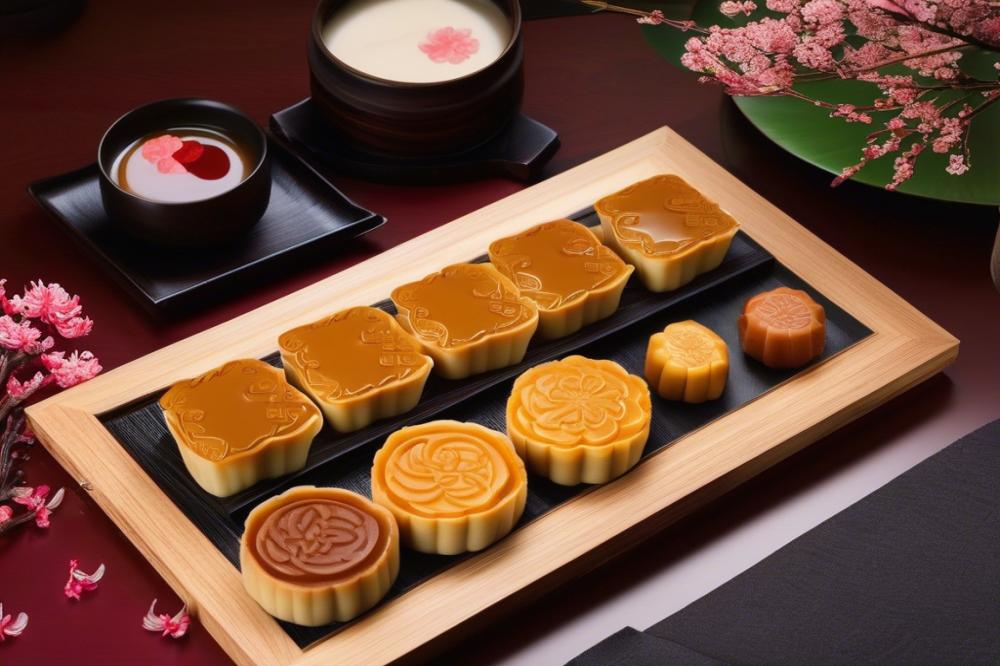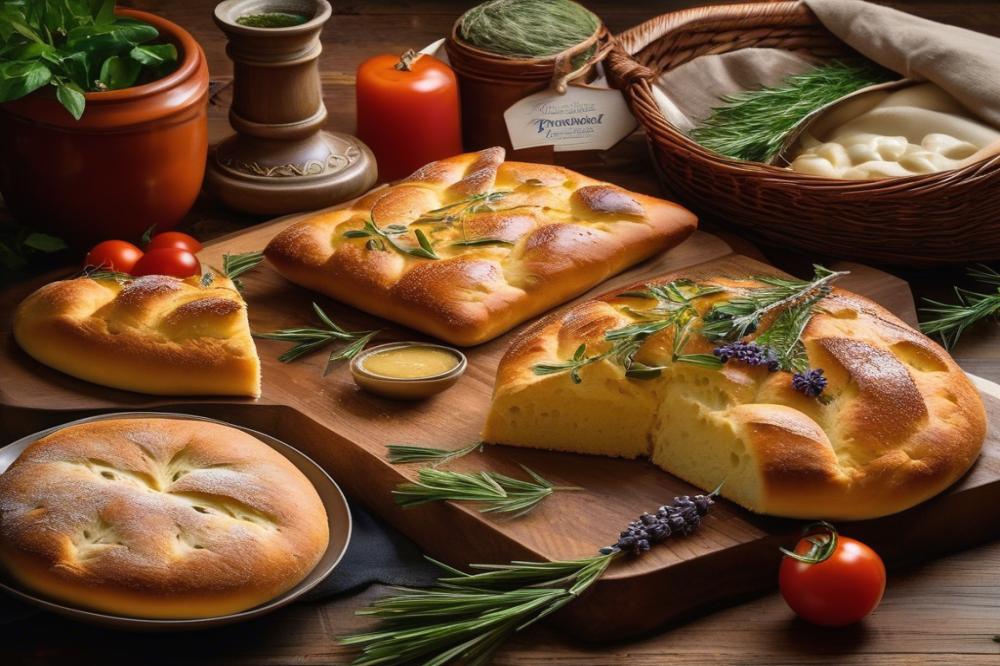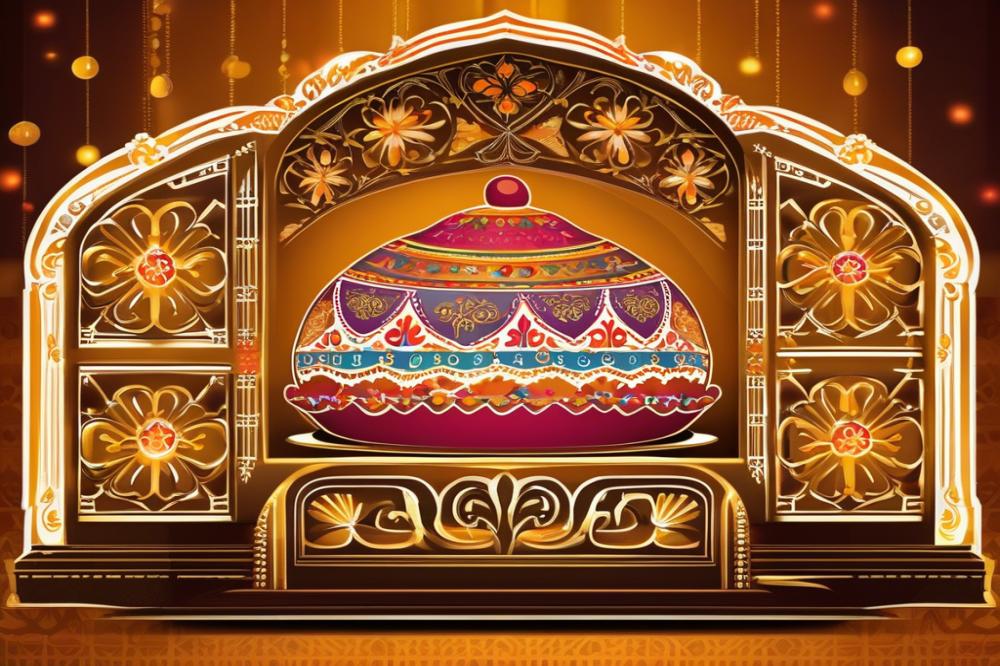Almond and Red Bean mooncakes
mooncakes are a celebrated type of Chinese pastry, renowned for their rich flavors and elaborate designs. These beloved desserts hold a special place in Chinese culture, particularly during the Mid-Autumn Festival. Each year, families come together to share these treats, appreciating their historical and cultural significance.
During this festival, mooncakes symbolize reunion and togetherness, reminding people of their roots and cherished memories. Traditionally filled with sweet pastes such as lotus seed or black sesame, these pastries have evolved over time to embrace a variety of flavors. One delightful variation is the combination of almond and red bean paste. This unique blend offers a delightful taste experience.
The almond flavor adds a nutty richness, while the red bean paste lends a smooth sweetness. These ingredients complement each other, creating a harmonious balance. Home bakers often seek tips on how to best prepare these treats, ensuring a pleasant texture and appearance. As you explore the world of mooncakes, the stories behind each recipe and variation contribute to their enduring popularity during this festive time.
Almond Mooncakes: A Delightful Variation

The almond flavor adds a distinct touch to many Asian sweets. Its mild, nutty profile makes it a favorite among dessert lovers. People enjoy the richness that almonds bring to treats, incorporating them into various recipes.
Red bean paste has long been cherished in Asian cuisines. This sweet filling offers a smooth, slightly earthy taste. A wide range of Chinese pastries features this ingredient, from buns to mooncakes. Its popularity stems from a perfect balance of sweetness and flavor, making it beloved by many.
Combining almond flavor with red bean paste creates an interesting dessert option. The two ingredients harmonize surprisingly well. Almonds add a crunchy texture and a creamier taste, while the red bean contributes its signature sweetness. Together, they offer a new twist for those seeking something beyond the traditional filling.
This pairing has cultural significance in traditional recipes. Almonds often symbolize good luck and prosperity in many Asian cultures. Meanwhile, red beans signify fertility and good fortune. Serving these mooncakes during the Mid-Autumn Festival connects them to a rich heritage. Families gather to celebrate, sharing these treats as a symbol of unity and joy.
People looking to try baking these mooncakes will find helpful tips online. Knowing the right temperatures and tools can make a significant difference. Whether for a festive occasion or just a sweet craving, creating these pastries at home can be rewarding.
Ingredients and Quantities

Essential Ingredients for Mooncakes
Creating almond and Red Bean Mooncakes requires a few key ingredients. These Chinese pastries feature a delightful combination of sweet fillings and a tender crust. Here’s what you’ll need:
- 2 cups all-purpose flour
- ½ cup golden syrup
- ¼ cup vegetable oil
- 1 teaspoon alkaline water
- 1 cup red bean paste
- ½ cup almond paste or finely ground almonds
- 1 egg yolk (for egg wash)
- Optional: sesame seeds for garnish
Breakdown of Necessary Quantities
Measuring accurately is vital for achieving the best results. The flour forms the crust, while golden syrup adds a touch of sweetness. A balance between oil and alkaline water creates the perfect texture. Red bean paste serves as the main filling, with almond paste enhancing the overall flavor. Generally, this recipe yields approximately 12 mooncakes, depending on their size.
Sourcing Quality Ingredients
Finding quality almond and red bean paste can make a significant difference. Local Asian grocery stores often stock these essentials. Remember to check for freshly made products, as they tend to offer a richer flavor. When purchasing almond paste, look for brands without added preservatives for a more natural taste.
Flavoring and Enhancements
Adding extra flavors can elevate your mooncake experience. Roasted sesame seeds can provide a nutty crunch. Alternatively, consider incorporating a touch of matcha powder or cocoa for a unique twist. Adjust the quantity based on personal preference; start small and taste as you go. Experimenting with different fillings can lead to delightful surprises for your dessert table.
Step-by-step Baking Method

Preparing the Mooncake Dough
Mixing the right ingredients is crucial for your mooncake dough. Start with all-purpose flour, golden syrup, and some lye water. Combine them together to form a soft, pliable dough. Adding vegetable oil can give the dough a nice texture. A gentle kneading helps to unify the mixture. Let this dough rest for at least 30 minutes. This resting period is important; it allows the gluten to relax, making it easier to shape later.
Making the Red Bean Paste Filling
Creating the red bean paste requires patience. Use azuki beans to make an authentic filling. Boil the beans until they are soft, then drain the water. Blend the beans with sugar until smooth. Cook this mixture on low heat to achieve a thicker consistency. Stir often to prevent sticking. Once the paste cools down, form it into small balls. Each ball should be about 30 grams. These will become the sweet fillings inside the mooncakes.
Assembling and Shaping the Mooncakes
Taking the rested dough, divide it into equal portions. Each portion should be about 50 grams in weight. Flatten one piece into a circle, creating a small well in the center. Place a red bean paste ball in this well, then carefully fold the dough over the filling. Seal it well to avoid leakage. Gently roll the filled dough into a smooth ball. Using a mooncake mold, press the ball into shape. This creates beautiful designs on the surface. Release it carefully to maintain the shape.
Baking Instructions
Prepare to bake by preheating your oven. Set the temperature to 180°C (350°F). Line a baking tray with parchment paper for easy cleanup. Arrange the mooncakes on the tray, leaving space between them. Bake for about 20 minutes until lightly golden. Remove them and let them cool slightly. After cooling, brush the tops with egg wash for a glossy finish. Return them to the oven for another 10 minutes. Cooling these pastries completely is key; flavors deepen over time. Consider enjoying them with tea during the Mid-Autumn Festival to celebrate cultural significance.
Baking Tips for Perfect Mooncakes
Creating delicious mooncakes requires attention to detail. First, achieving a smooth dough is essential. Begin by sifting flour and mixing it properly. Use room temperature water to avoid clumps. Knead it well until it feels soft and pliable. An even texture is critical for great pastries.
For evenly shaped products, consider using a mooncake mold. These molds help form a consistent shape and size. They also add decorative patterns. Press the dough firmly into the mold, but avoid excessive pressure that could distort the design. Letting the pastry rest for a few minutes can improve ease of handling.
Common issues may arise during baking. Sometimes the pastries crack, indicating that the oven temperature was too high. Lowering the heat can solve this problem. A lack of color on the crust can mean they need more time in the oven. Check for a golden hue as an indicator of doneness.
Storage plays a big role in maintaining freshness. Mooncakes are best kept in an airtight container. They can be stored at room temperature for a few days or refrigerated to extend shelf life. Serve them at room temperature for optimal taste. Pair them with tea for a delightful experience during the Mid-Autumn Festival.
Presentation can elevate the simple dessert into something special. On a nice plate, arrange mooncakes with tea cups to create visual appeal. Consider adding fresh fruits or nuts for color. Lightly dusting the pastries with powdered sugar can enhance their look and flavor. Pairing mooncakes with green or oolong tea complements the rich almond flavor and sweet fillings like red bean paste.
Cultural Significance and Modern Adaptations
The Mid-Autumn Festival holds deep cultural meaning for many people. This celebration takes place when the moon is at its fullest and brightest. Families gather together, express gratitude, and appreciate the beauty of the harvest. Mooncakes serve as important symbols during this time. These traditional pastries are often filled with sweet fillings, conveying wishes for unity and completeness.
Traditions change over time to adapt to modern preferences. While classic mooncakes have flavors like lotus seed and red bean paste, fresh interpretations surface annually. Bakers experiment with flavors, introducing new ingredients into their recipes. Almond flavor has recently gained popularity, offering a refreshing twist. Such innovations reflect how culinary practices continue to evolve within culture.
The rising trend for unique mooncake flavors delights both young and old. Consumers now seek creative options, including fruit-infused and chocolate varieties. These innovative choices appeal to those who want to experience something different during the festival. The vibrant food market encourages this experimentation as people look for ways to celebrate in their own style.
Sharing mooncakes often creates cherished memories. Many families have their own cherished baking tips handed down through generations. One mother recalls her childhood, filled with laughter as she baked with her grandmother. She shares how making mooncakes together became a cherished ritual. The smell of freshly baked pastries would fill the house, evoking feelings of joy and togetherness.
Friends often exchange mooncakes during the festival, further highlighting the spirit of giving. These small gestures strengthen relationships and show appreciation. As society becomes more interconnected, mooncake sharing continues to symbolize goodwill. Stories shared between friends and family often revolve around their favorite fillings and unique baking experiences.
Final Thoughts on Almond and Red Bean Mooncakes
Baking and sharing almond and red bean mooncakes brings joy to many during festive seasons. The act of creating these delightful treats can create lasting memories. Many families bond over the meticulous process of crafting the perfect pastry, from preparing the filling to shaping the dough. Once finished, the satisfaction of sharing these confections is unmatched. Friends and family gather, making every bite special.
Trying your hand at making these Asian-style baked desserts can be both fun and rewarding. Even if you are a novice baker, the process requires only simple ingredients and a little patience. You might discover a new hobby or even a passion. Gathering ingredients and inviting loved ones to join in can transform the cooking experience into a delightful social activity.
Chinese pastries, like mooncakes, hold deeper meanings beyond taste. They often symbolize unity and celebration. During festivals, these treats serve as a reminder of cultural heritage and traditions. Each bite carries stories of family gatherings and festive cheer. Reflecting on their significance can deepen your appreciation for these delectable desserts. In the end, making almond and red bean mooncakes is not just about filling bellies; it’s about filling hearts with warmth and connection.



